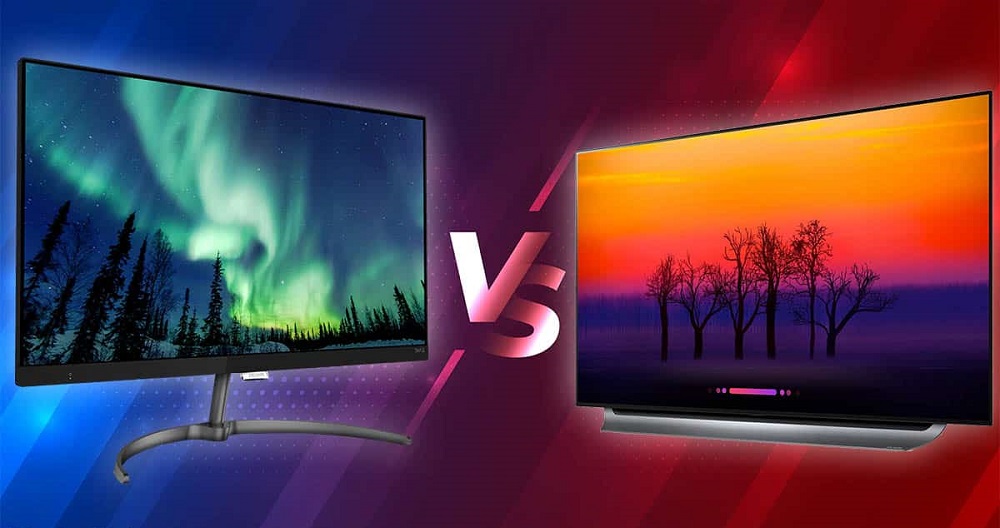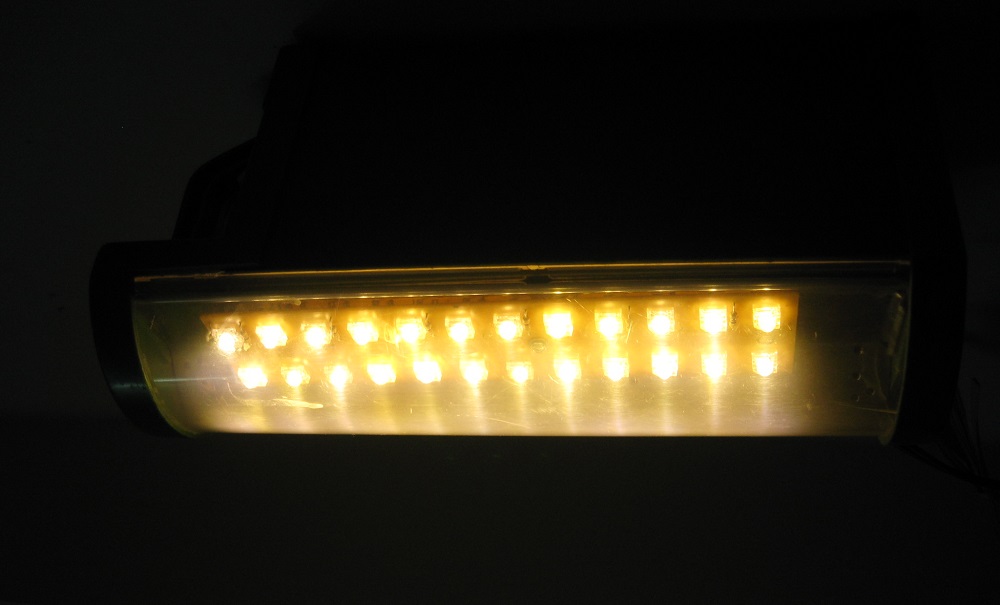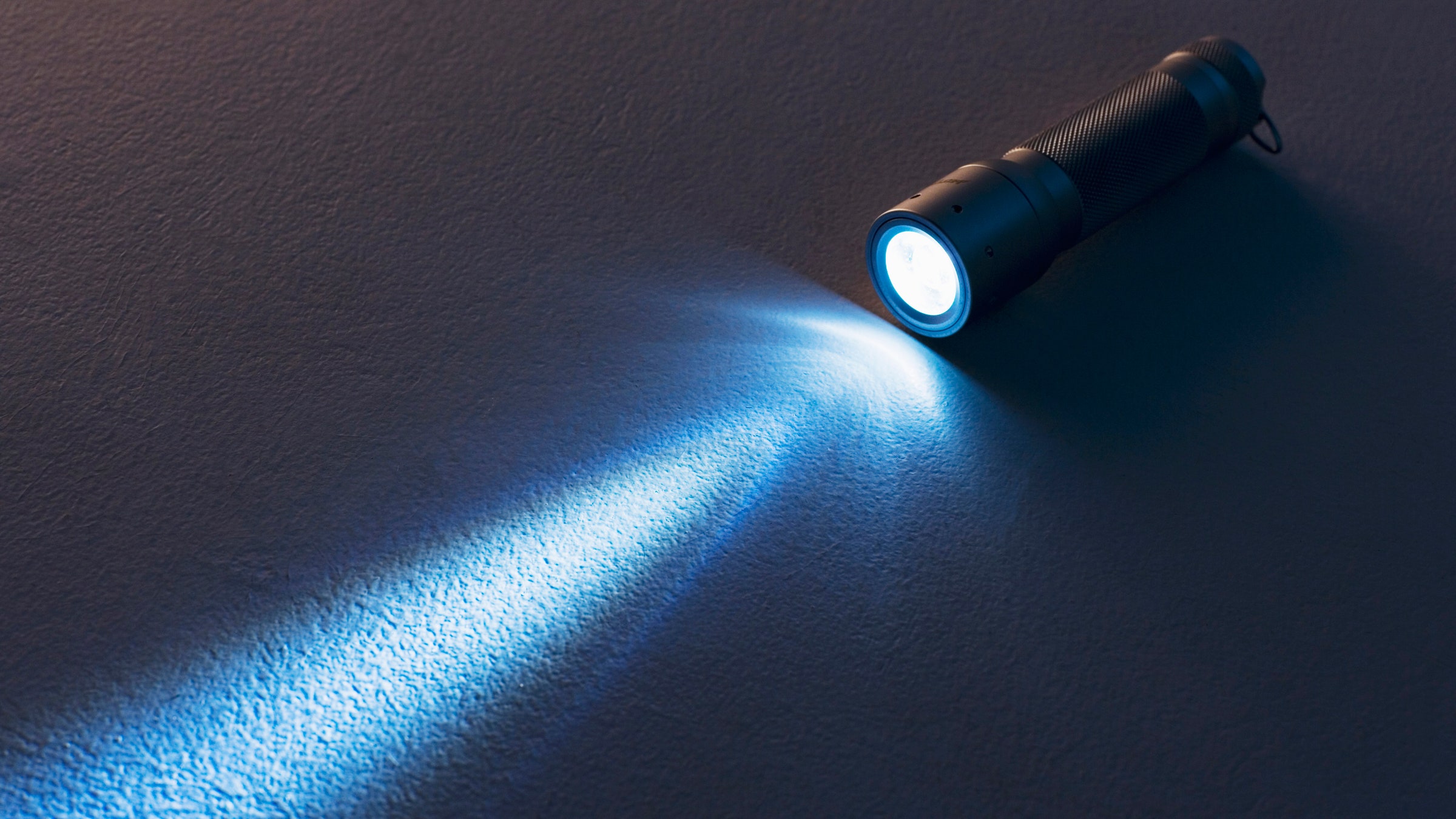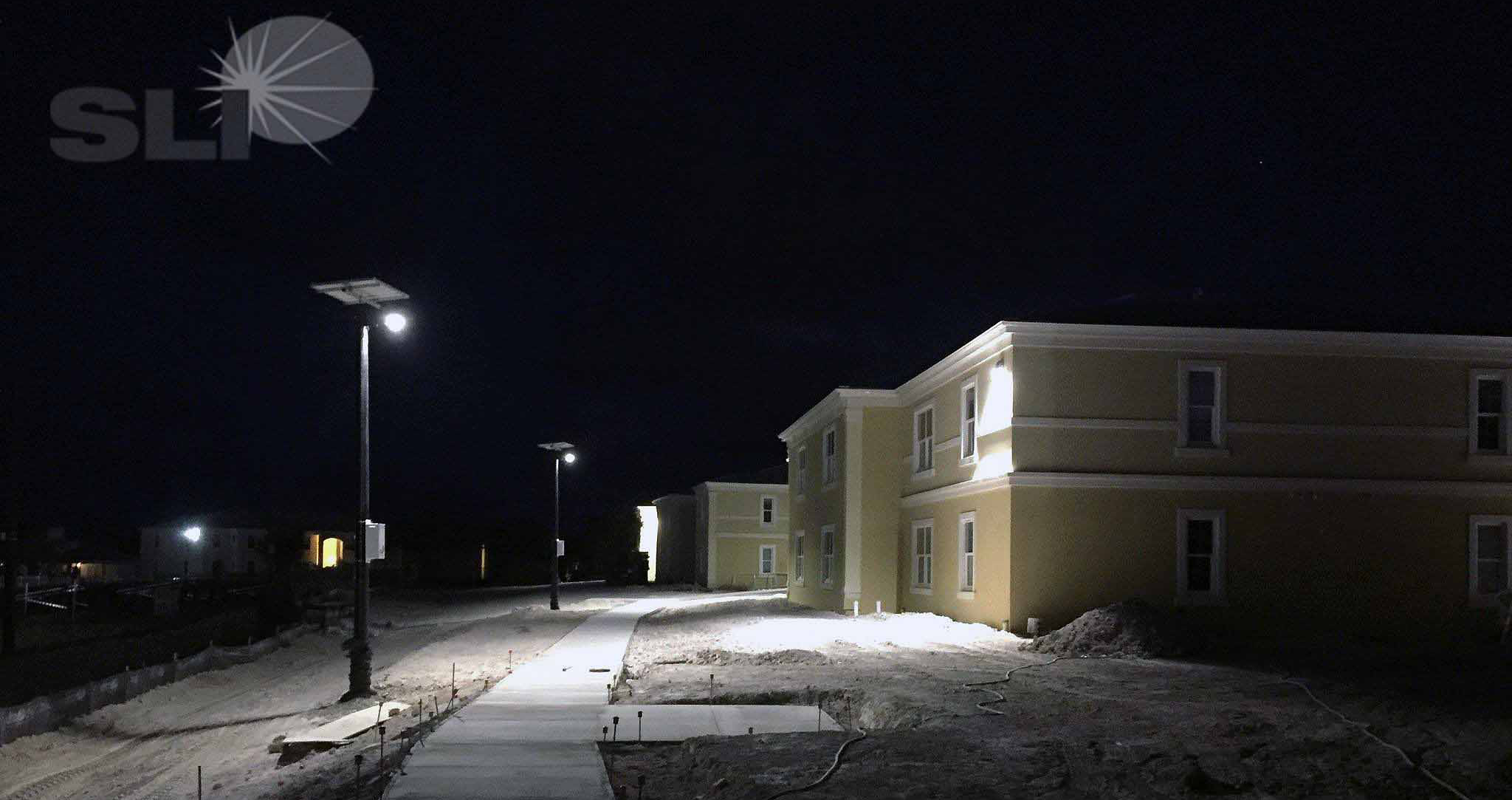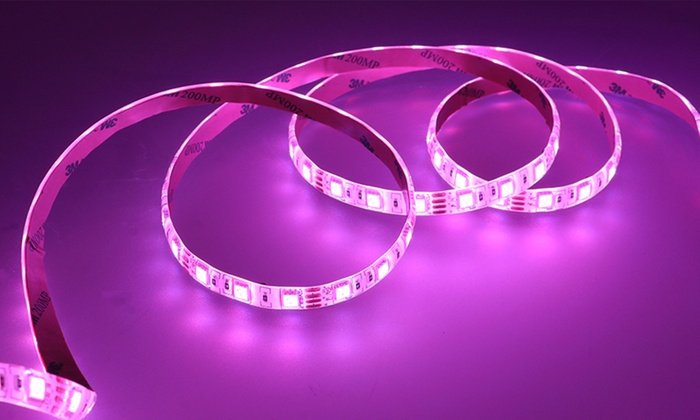Lighting plays a major role in our lives both during the day and especially at night. Since man is not nocturnal by nature, he requires both artificial and natural light to see his way through. For generations, different lighting innovations have transformed the way we live and the way we work, and one of the foremost innovations so far is the LED technology.
1. What are LED Ceiling lights?
2. LED Ceiling light benefits
3. Type and Color of LED Ceiling lights
4. LED Ceiling light colors
5. LED Ceiling Lights vs. Halogen
6. LED Ceiling Lights vs. Fluorescent
7. Are LED Ceiling Lights Safe?
8. Where to install LED Ceiling Lights
9. How many LED ceiling lights do I need?
10. How to install LED ceiling lights
11. How to wire ceiling lights?
12. How to change LED Ceiling Lights?
13. How long do LED Ceiling lights last?
14. Where to buy LED Ceiling Lights
15. Conclusion
Ceiling lights are used in many homes, offices, halls, stores, warehouses, and any confined area where lighting is needed. Due to the vantage point advantage provided by ceilings; this part of your room is one of the best places you can install your lighting. In this article, we will bring you light; all you need to know about LED ceiling lights.
We will also point out some of the best ceiling light brands in the open market today, as well as some of the advantages LED lights have over other forms of lighting technology.
What are LED Ceiling lights?
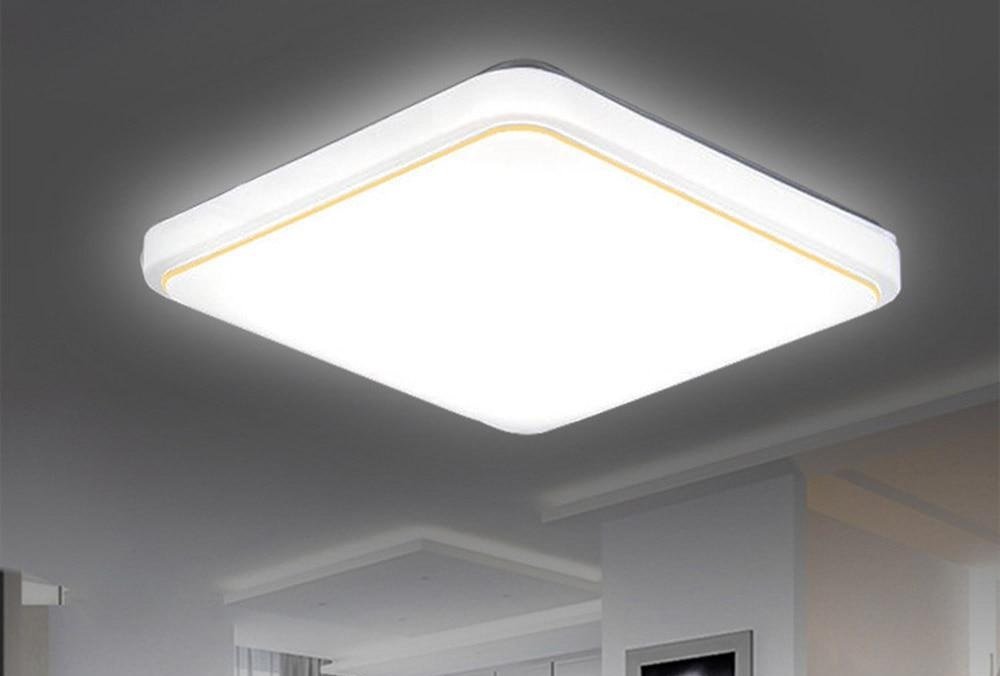
LED, also called Light Emitting Diode, is the most popular lighting technology in use today. Although it is not the only technology available as there are also incandescent lights, CFL, Halogen, and fluorescents, it, however, is a top choice for many businesses and homeowners. LED ceiling lights have become the ideal choice because they provide sufficient indoor illumination, and they are long-lasting.
Today, they are gradually replacing other forms of traditional lighting due to the efficiency and durability of LEDs both in commercial and residential settings. It is not uncommon to find them at airports, factories, homes, conference rooms, hotels, and hospitals.
They are fixed on ceilings, and they come in different varieties of shapes and sizes but serving the same purpose. Ceiling lights are powered by light-emitting diodes, and they do not require any special type of tools to install them since they are designed for comfort. As for the power supply and casing, manufacturers also make them highly adaptive. We have chandeliers, pendants, and different other design casings.
How does LED work?
LED has a relatively high-intensity source because of the effect of electroluminescence. For the bulb to light up, an electric current has to pass through a semi-conductible material. Once you switch the power on from the power source, the current flow through, and the bulb will light up immediately with no flickering or humming.
LED Ceiling light benefits

LED ceiling lights have become the number option for many for the benefits they provide to users. Let us take a look at some of the reasons why this 21st-century lighting technology continues to have a record-breaking impact on human life.
Energy Efficiency
The first thing you should know is that LED Ceiling lights are energy efficient. This should not come as a surprise because energy conservators rank LED as number one on their list of energy-efficient lighting systems. Unlike Fluorescent, halogen, or incandescent bulbs, LED consumes less voltage but produces more illumination. If you want to cut down on your energy cost, LED is the way to go. You get to illuminate your rooms round the clock without having to pay so much in return.
Long-life Span
Another benefit of LED ceiling lights is the longevity of use. The average LED bulb can provide lighting of up to 50,000 lighting hours if left undamaged. This represents good value for money since you will not have to change your ceiling lights every now and then when an old bulb goes bad.
Cost-saving device
When you combine the above benefits, you get to save a worthy sum of money. Why? Simply because you pay less on electric bills and new replacements.
Type and Color of LED Ceiling lights
Remember that we stated in a previous paragraph that ceiling lights come in different shapes and sizes? Yes, they do, but they all serve the same purpose, which is to light up dark places. Let us look at some of the different types of LED lights and colors commonly found in both residential and commercial areas.
Flush Mount
A flush mount ceiling light is designed to blend seamlessly with the surrounding areas so as to provide just enough illumination without attracting undue attention. Flush Mounts are ideal for hallways and areas where people don’t linger for too long but just pass through. They are not meant to impress but just to provide needed lighting.
Semi-flush Mount
This kind is similar to the Flush Mount with a slight difference. The difference exists just between the bulb and the ceiling from which the bulb is hanging. The difference is just a matter of design and nothing more. Most semi-flush mounts hang off the ceiling by just a few inches.
Plug-in Ceiling Light
A plug-in ceiling light is one that comes with a plug of its own. To turn it on, you will have to plug it into a power source and then turn on the power. Unlike other types that require a permanent connection to the light source, this type of ceiling light had plugs that can be disconnected from the socket when not in use.
Chandeliers
Chandeliers are the Kings of luxurious lighting. They are designed to illuminate and to decorate at the same time. They come in different shapes, sizes, and amazing designs.
LED Ceiling light colors
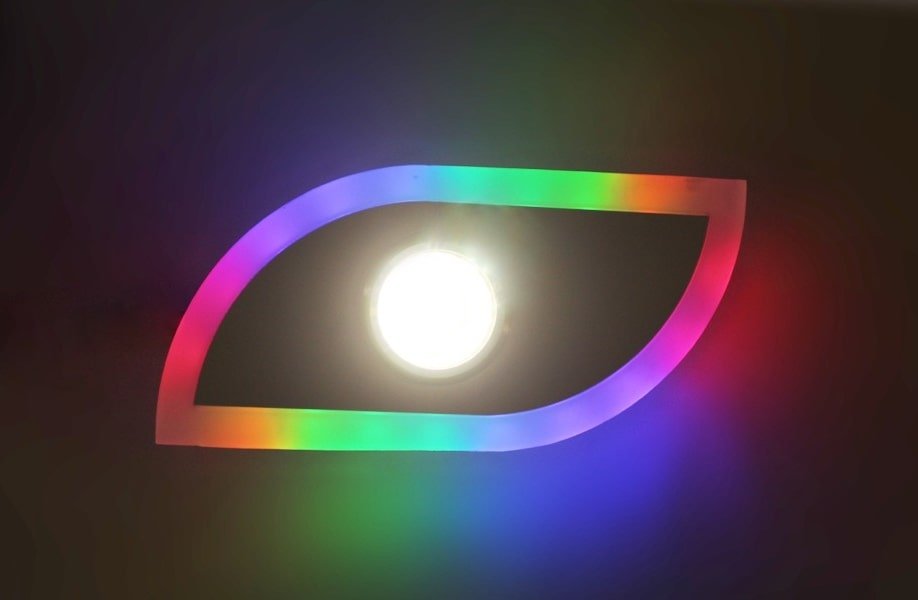
LED ceiling lights come in color varieties. We have
- Black
- Nickel
- Bronze
- White
- Gold
- Chrome
- Blue
- Red
- Green
And many more.
When choosing a color, make sure you determine the essential purpose for needing the light in the first place. If you plan to install it in a dark room, you should go for colors like White or Gold. If you want to add a little creativity, you can use a combination of both or another color like red or blue.
If aesthetics is what you are interested in, Chrome and Nickel are not bad choices. Blue is another nice color you can go for. However, make sure you only used colored lights in the right areas.
LED Ceiling Lights vs. Halogen
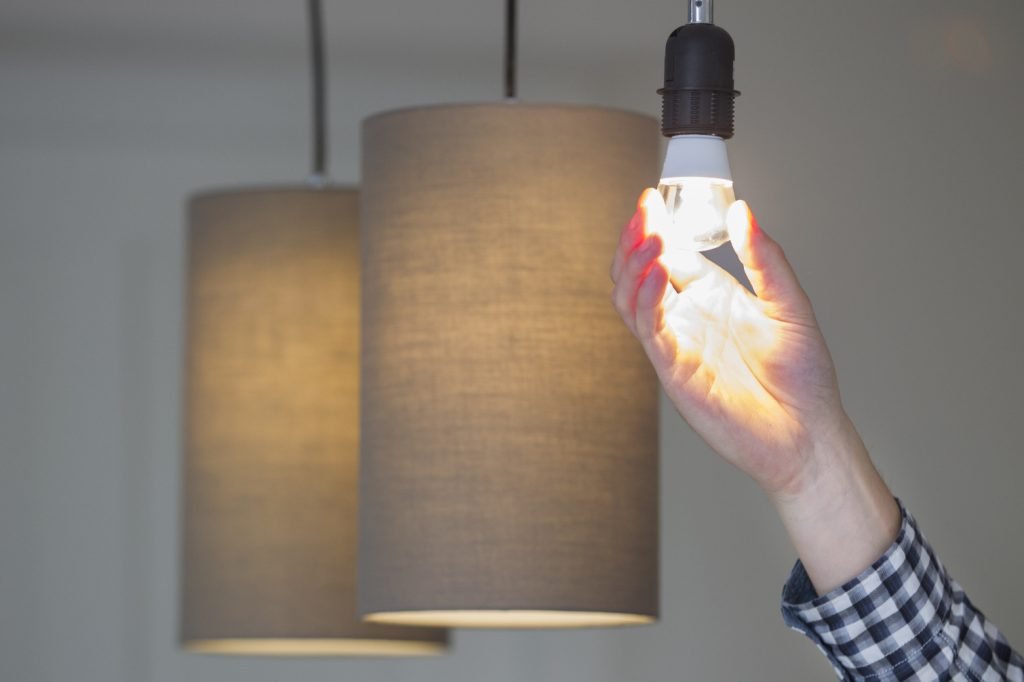
Halogen lights are widely used, especially for security and surveillance purposes. But are they as good as LED lights? How do they compare to LED? To find out, we took our time to highlight the pros and cons of using both.
Halogen bulbs
- Last twice longer than incandescent bulbs for a maximum of 2,000 hours
- Produce infrared light, which can be damaging to fabrics and is sensitive to the skin
- Produce heat and can scald the skin if you touch it while it is on for several hours, and they require air conditioning to function at optimal levels
- Very fragile due to their delicate filaments
LED ceiling lights
- Have a longer lifespan and can last for a long 50,000 hours
- Consumes 80% less energy compared to halogen bulbs
- More expensive but lower power consumption make up for their high cost
- Are durable and shatterproof
- Do not produce as much heat as halogen
- Come on varieties of colors and temperatures
- Do not produce harmful gases and chemicals
Halogen light is also efficient, but it is not as energy efficient as LED ceiling lights. LED ceiling lights are safer, energy-efficient, and have a much longer lifespan.
LED Ceiling Lights vs. Fluorescent
Fluorescent lighting was first introduced more than a hundred years ago, and it has remained a mainstream lighting system for several generations. Fluorescent technology replaced and outsmarted incandescent bulbs because they were far more efficient. They, however, fall short of LED technology, as we will see in our comparison below.
Fluorescent
Some of the major deficiencies noticed with this traditional lighting technology include
- Mercury, which is hazardous to humans
- Unfriendly to the environment
- Age quickly when they are switched on and off frequently
- Produce Light within a 360-degree span
- Requires additional accessories to improve illumination
Major strengths noticed include
- 10,000 lighting hours
- The lifespan is extended if the bulb remains on
- Produces less heat than halogen lights
LED Ceiling lights deficiencies
The deficiencies or disadvantage of LEDs compared to fluorescent are few when we reviewed LED lights
- They are more expensive than fluorescent lights
Major advantages
- Longer lifespan
- Projects light in 180 degrees
- Energy conserver
- LED does not eject harmful toxins or infrared
Besides these advantages, LED also offers users extra perks like
- Multiple color and multicolor combinations
- Small size but powerful illumination
- Have faster switching times
LED offers users a much better value for money than halogen or fluorescent bulbs. They may be priced higher, but the extra cost can be covered by the low energy consumption and its long-lasting functionality.
Moreover, LED offers next to no threat to users or the environment since they do not contain harmful chemicals like Mercury; neither do they project harmful infrared or UV rays that are harmful to humans.
Are LED Ceiling Lights Safe?
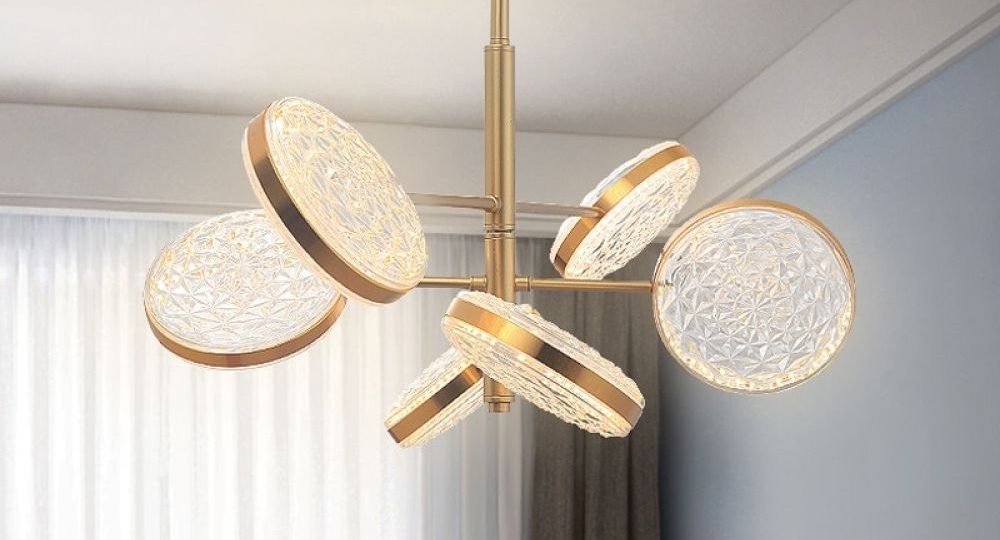
LED lights are safe for humans and the environment. They operate using low voltage, which is one of the reasons why experts consider them much safer than other lighting options. Some LED lights operate at voltage as low as 12 V. When reviewing the safety aspect of LED lights, there are certain metrics that experts look at. These metrics are:
Effect on the Environment
LED is recommended by green organizations all over the world because if more people use them, greenhouse emissions released into the atmosphere will be reduced significantly. Many LED products are also made with biodegradable materials that pose no risks to the environment.
Effect on humans
Medical experts have not found any health hazards posed by LED technology either to the eyes or to the skin. However, they recommend that users avoid staring at LED lights, particularly in digital devices, for long. LED technology is also less susceptible to energy fluctuations that cause bulbs to flicker.
Wide Spectrum Design
LED lights offer users myriad of design spectrums. They offer uniformity, offer the possibility of fewer fluctuations when switched on, and then on between half a second to 6 minutes.
Where to install LED Ceiling Lights

You can install your LED Ceiling Lights in any part of your home or office that requires illumination. Some common spots where you can install a ceiling light include
- Bedroom
- Kitchen
- Dark outdoor shades
- Dining room
- Hallway
- Shops
- Offices
- Bathroom
Wherever you decide to install your ceiling lights, just make sure there is a power source not too far away. Also, avoid installing it in enclosures where the ceiling is very low to avoid people bumping their heads in the bulb when they pass (if you use a semi-flush mount).
How many LED ceiling lights do I need?

Unlike other light systems, the capacity of LED light is calculated in lumens. Now, to determine the number of lumens required to light up a room, you will need to multiply the square foot of the room by its foot-candle needs. For instance, a room that is 100 square feet requires between 10-20 foot candles for perfect illumination. With that being the case, such a room will require a lumens capacity between 1,000-2,000 lumens. Calculating the lumens capacity should not be a problem because every single LED bulb marketed online today provides users with lumens capacity information.
How to install LED ceiling lights
If you want to install your ceiling lights, you have two options. The first one is to hire an electrician to do it for you. This service may cost you $100 or more. If you don’t want to spend money on such a service, you can do it yourself. Find below helpful tips to guide you.
- Pull back the lock to remove the mounting bracket
- Fix the bracket to the ceiling (if your ceiling is made of stone or concrete, you will need to drill 2 holes, then fix in the bracket with its anchor, then screw tight)
- Install an anti-scratch pad at the back of the light for extra protection (optional)
- Insert the wires into the current connection accordingly
- Straighten the wires, apply the sealant, and lock it in the compartment.
- Open the bracket lock and install the lamp into the fixed bracket.
- Turn the switch on
How to wire ceiling lights?
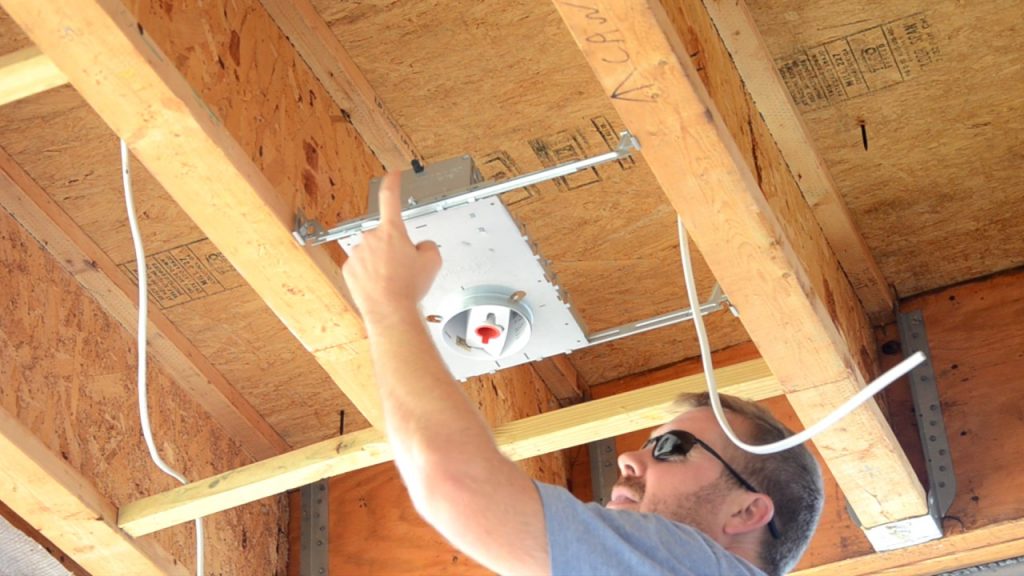
To wire your ceiling light is easy. Before you start, here is a list of tools and materials you need.
- Mounting accessories
- Wire cap nuts
- Ceiling Light
- Philips screwdriver
Here is a simple step to wire your ceiling lights with ease.
1st step – Turn the power off
Cut the power that supplies power to the wire. After that, open the voltage detector to check if the wires are in good condition. Also, check for current using your tester. If you notice current, cut the main breaker off on the panel.
2nd Step – Review your wires
Once the power is off, now is the time to figure out which wire will support your LED ceiling light. Wires come in different colors. Neutral wires are white, and ground wires are green or copper, while hot wires are black. The wires to concern yourself with are hot wires and neutral wires. Also, best in mind that your junction box may have a red wire instead of a black one.
3rd step – Select the wires
Figure out which wide is neutral and which is the hot wire based on their colors. If yours is gold or tanned, you will need to look out for writings and figures on them or even plastic coatings. Hotwires have plastic coatings or settings that can be broken or stripped open.
4th step – Fix wires in their appropriate holes
Your ceiling light will come with margins that indicate where each wire should pass through. Make sure you do so carefully, so you don’t pass the wrong wire into the wrong holes.
How to change LED Ceiling Lights?

Although LED lights can work for many years, a time will come when you will need to seek replacements. Replacing your old LED ceiling lights with new ones should not be an issue if you know how to go about it. Just follow these steps below.
Make preparations
Before you start, screw in all the magnetic screws into the light holes. Make sure you secure the driver box on the case, so it doesn’t drop off. Note that the driver box should always be very close to the LED light.
Connect the Neutral cable
Observe the cable connector in your old light, which connects the light cable and the direct power. Just follow the wiring in the same particular order with your new light, just a seen in the old light.
Remove and Replace
To remove the old light, unscrew it by loosening the screws one after the other with a screwdriver. If it uses magnetic screws, you won’t need to use a screwdriver. You can simply remove the light completely from the casing. After removing the old light from the connector, replace it with the new one. If it uses screws, screw each one tightly. If it uses magnetic screws, just put them in place and make sure that the connector block is not covering the light.
How long do LED Ceiling lights last?
Most LED lights can last between 30,000 hours, with 50,000 lighting hours being the maximum. Based on released data, LED lights lasts
- 50 times longer than incandescent lights
- 20-25 times longer than halogen
- 8-10 times longer than fluorescents
If it is used for 12 hours daily, it can last for
- 11 years
If used for 8 hours daily, it can last for
- 17 years
Why does my LED Ceiling Light flicker?
Your LED ceiling light may flicker because the switch or bulb is old, faulty, of poor quality, or is incompatible with the wiring.
What brand of LED Ceiling lights are the best
There are so many LED brands out there. While large numbers offer buyers the luxury of choice, a significant number of them are low-quality products that promise so much but offer very little quality. However, some brands that stand out are
- Philips
- Xiaomi
- TLC
- Samsung
Philips remains one of the most successful lighting brands in the world. They also signed a joint agreement with Xiaomi to provide the Chinese market with high quality LED products. If you buy ceiling lights from any of the 4 brands listed above, you can be sure that you are buying products of the highest quality. Some of their products also come with a 2-3 years warranty, so in case of faults, you can always apply for a replacement.
Buying quality products is advisable because you get to save money that you would have spent on frequent replacement by manufacturers who offer no warranty for their products.
Where to buy LED Ceiling Lights

There are quite a few online platforms that you can source for quality LED Ceiling lights. Some very good online platforms are
Conclusion
LED Ceiling lights help to illuminate our homes and offices in ways that other traditional lighting systems can not. You can use them to also improve the aesthetic quality of your indoor spaces a well. They are safe, effective, and long-lasting. Buying good brands from reliable online platforms that offer buyers product reviews is advisable if you want to buy ceiling lights of the best quality.

